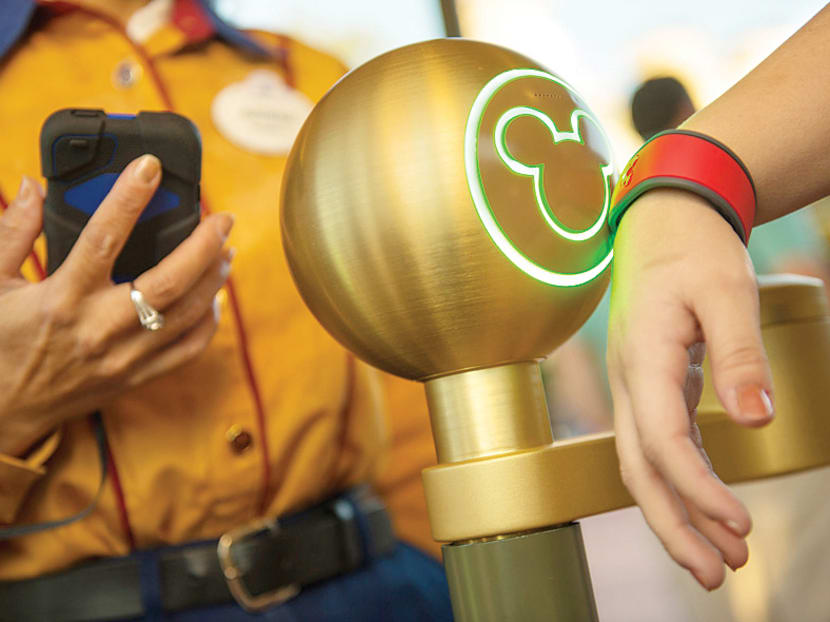STB explores use of Disney-style wearable tags to boost visitor experience
SINGAPORE — The Singapore Tourism Board (STB) is exploring the use of radio frequency identification technology (RFID) to boost tourism spending and improve the visitor experience, having been inspired by the success of wearable RFID tags at Walt Disney World in Florida, in the United States.

At Walt Disney World, MyMagic+ wristbands serve as room
keys and theme park tickets, among other things. Photo: Disney
SINGAPORE — The Singapore Tourism Board (STB) is exploring the use of radio frequency identification technology (RFID) to boost tourism spending and improve the visitor experience, having been inspired by the success of wearable RFID tags at Walt Disney World in Florida, in the United States.
The technology will also be used to gather data that the STB hopes will yield important consumer behavioural insights.
Between November and January, up to 1,000 tags and 20 tag-detecting readers will be tested at two unspecified places — a tourist attraction and a meetings, incentives, conferences, and exhibitions venue, tender documents put up earlier this week by the STB showed.
Noting that Disney increased visitor spending by 8 per cent three months after rolling out the use of the RFID tags, the STB said it would explore using the technology on “gamification” at events and attractions, entry access, food and retail payments, as well as links to social media.
The tender documents said the vendor will design and implement a system of tag-detecting readers. Applications in the readers can, among other things, request rights to access user’s social media, suggest purchases based on registration information and post pictures on social media.
The system must comply with security and personal data requirements, and the vendor has to ensure that participants indicate their informed consent prior to the collection of any of their personal data.
At Walt Disney World, visitors are given MyMagic+ wristbands that serve as room keys, theme park tickets and optional payment accounts, among other things.
The Walt Disney Co reportedly spent US$1 billion (S$1.25 billion) on the technology. Last month, it was reported that the expenses of rolling out MyMagic+ continued to be a drag on the company’s profits between April and June — the first full quarter in which MyMagic+ was available to all Disney World theme-park guests. Still, company executives praised its performance and said it should start making a positive impact on the bottom line in the current quarter.
Other attractions in the US that uses RFID technology include Hyland Hills’ Water World in Denver and indoor water parks chain Great Wolf Lodge.
An STB report released last week showed that visitor arrivals from January to June fell 2.8 per cent to 7.5 million, compared with the same period last year. Mr Oliver Chong, STB executive director for communications and industry marketing, has said the board “emphasises quality tourism growth by focusing on the visitor experience and encouraging tourists to do and spend more in the local economy”.
Tourism experts TODAY spoke to felt the use of RFID technology could nudge tourists to spend more. Ms Wong King Yin, a lecturer at Nanyang Technological University’s Marketing and International Business division, said: “Theoretically, when tourists can pay for the goods or services in a more convenient way like contactless payment, they feel less pain of parting with the actual cash; then they will spend more, based on the results of extensive consumer behavioural study.”
Data collected can help local businesses to be more targeted in their promotion, said Ngee Ann Polytechnic senior tourism lecturer Michael Chiam.
Hotels, restaurants, theme parks, transportation systems and shopping malls were among the places and sectors where the technology could be rolled out, the experts suggested.
Ms Wong said an integrated system to automate hotel, transport and restaurant payments, for example, would alleviate the manpower crunch in frontline services. “All these payment processes require a lot of labour hours to handle,” she said.
Xue Jianyue







